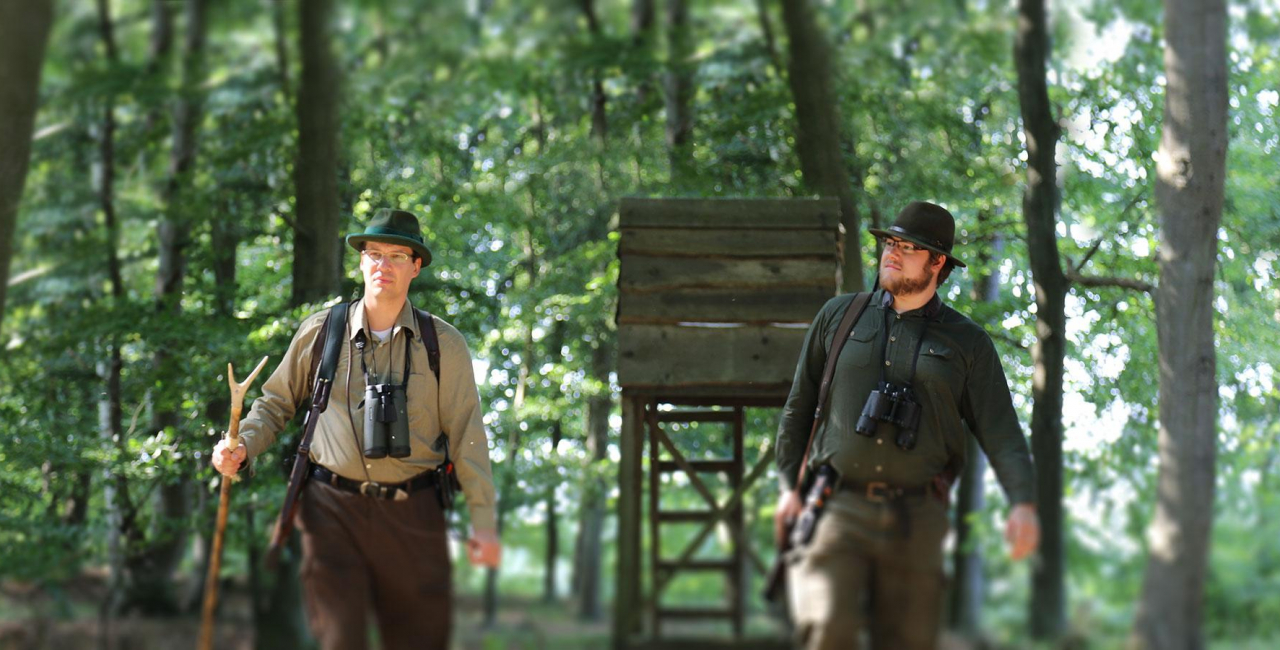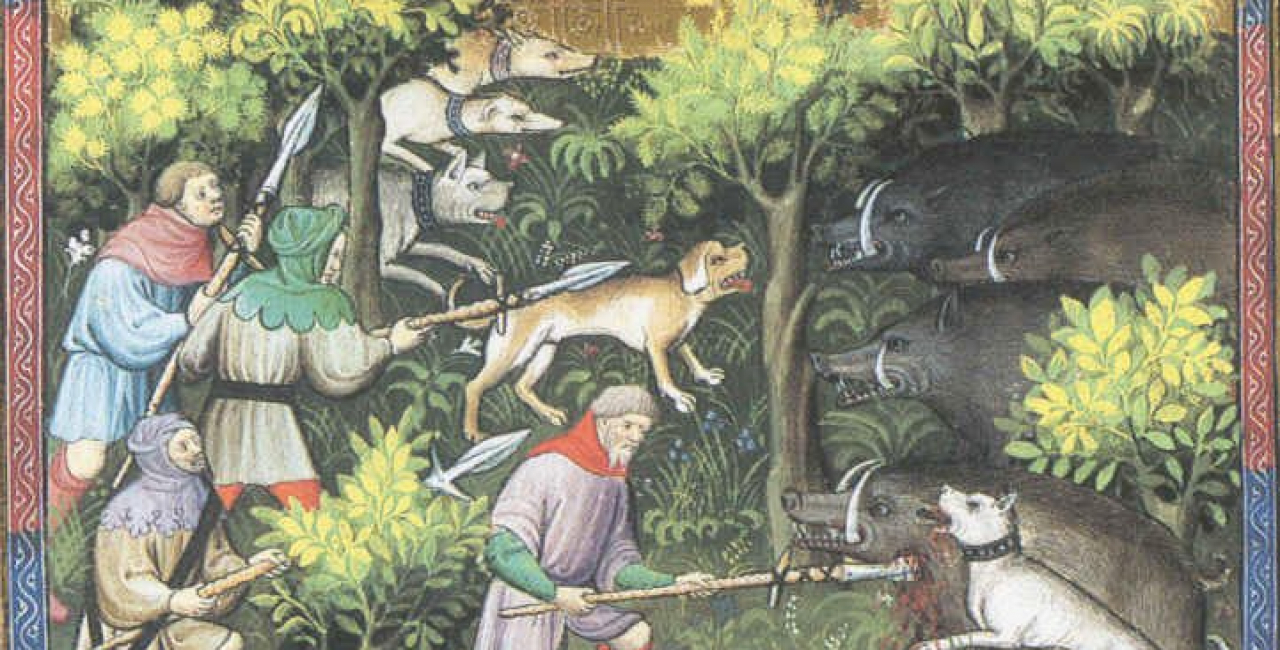The patrol
The purpose of the walk is to observe game and explore the area's special features. To prepare for hunting and to plan a precise hunt, the hunter must be well-versed in the area.
The stalking
Stalking means moving slowly and silently toward game. This requires stalking paths that are regularly swept, i.e., cleared of leaves and branches. The success of the stalking depends crucially on the wind direction. A tailwind will absolutely ruin a stalking attempt, as will, for example, loud noises in dry leaves.
In summer, early morning is the best time to stalk, because the dewy ground largely absorbs the disturbing noises caused by the hunter. In winter, hunters prefer to stalk at midday, when game on sunny slopes or in open forest areas uses the sun's rays to warm their bodies.
The hunter's clothing should be as camouflage-colored and quiet as possible to avoid being noticed by game. Hunting equipment includes a rifle, binoculars, a backpack, and a stalking stick.
The hide
Stand hunting is the most common type of hunting. From a raised hide or ground stand, the hunter remains undetected by the game, provided they remain still and the wind is favorable. From here, they can quietly survey a sufficiently large area and observe the migrating game well without disturbing it, which is important when hunting increasingly secretive game. Furthermore, a more accurate shot is possible from a raised hide, as the bullet flies from above, toward the ground (bullet stop).
As a rule, the hunter should be in the hide about one to two hours before the game arrives.
Equipment: Rifle and binoculars. For long overnight hides, bring food and warm clothing. If you're cold in the hide, you won't be able to sit still and fire a clean shot.
(Quelle:DJZ)









